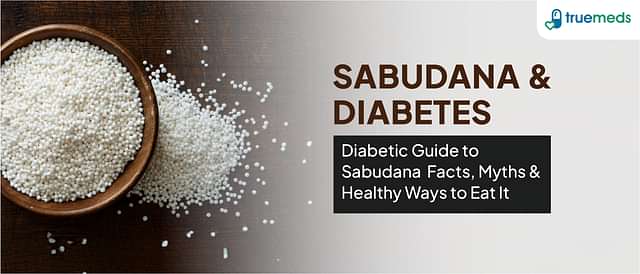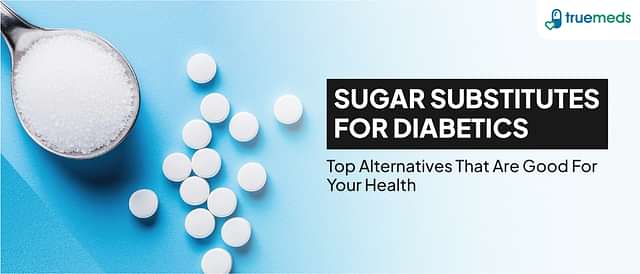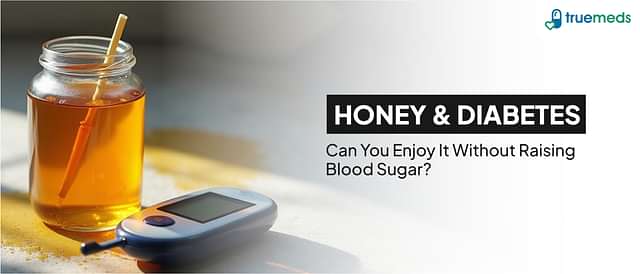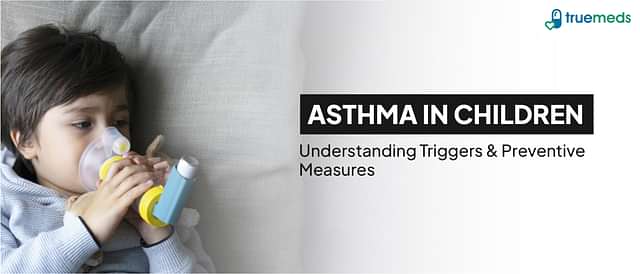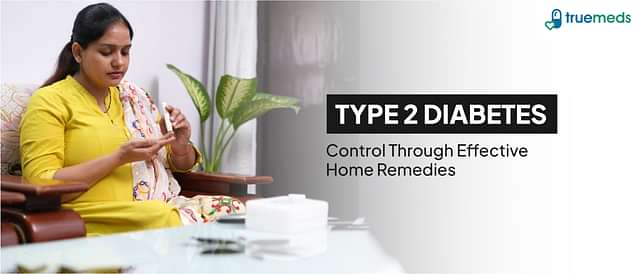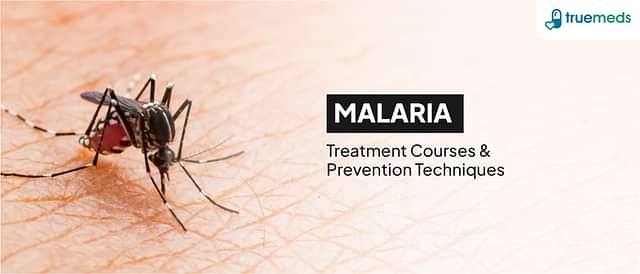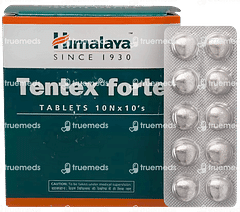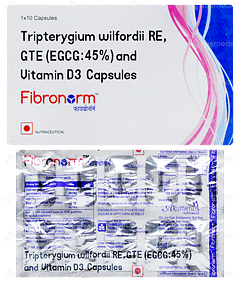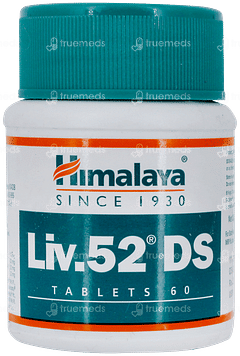Anaemia
Anaemia is a common condition characterised by a lower-than-normal number of red blood cells or the amount of haemoglobin in the blood. It can cause various symptoms such as tiredness, weakness, and shortness of breath. Anaemia can be caused by inadequate production, excessive loss, or increased destruction of red blood cells, and requires timely diagnosis and treatment.
Last updated on : 18 Dec, 2024
Read time : 14 mins
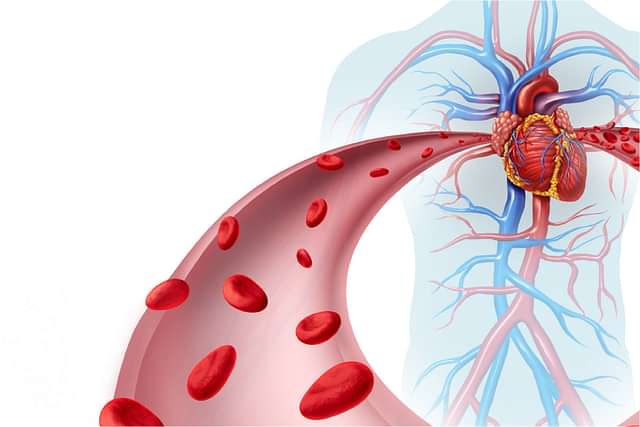
Overview of Disease
Anaemia is a condition characterised by a lower-than-normal number of red blood cells or the amount of haemoglobin in the blood. Haemoglobin is a protein in red blood cells that carries oxygen from the lungs to the rest of the body's tissues. Without sufficient haemoglobin or red blood cells, the body's tissues do not receive enough oxygen, leading to various symptoms and complications. Understanding the causes, symptoms, and treatment options for anaemia is essential for effective management of this condition.
What is Anaemia?
Anaemia is a condition in which the body lacks enough healthy red blood cells or haemoglobin to carry oxygen effectively to the body's tissues. Haemoglobin is a crucial protein found in red blood cells that binds to oxygen in the lungs and transports it to various organs and tissues throughout the body. When a person has anaemia, their body may experience symptoms such as tiredness, weakness, and shortness of breath due to the insufficient oxygen supply. Anaemia can be classified into various types, each with its own underlying cause, and can range from mild to severe. Some forms of anaemia may be prevented by maintaining a healthy diet, while others may require medical intervention.
Key Factors about Anaemia
| Category | Details |
| Also Referred as | Iron deficiency anaemia, macrocytic anaemia, normocytic anaemia |
| Commonly Occurs In | Women of childbearing age, infants, elderly individuals |
| Affected Organ | Bone marrow, gastrointestinal tract, kidneys |
| Type | Macrocytic, microcytic, normocytic |
| Common Signs | Fatigue, weakness, pale skin, shortness of breath, dizziness |
| Consulting Specialist | Haematologist, gastroenterologist, nephrologist |
| Treatement Procedures | Dietary changes, iron supplements, addressing underlying causes |
| Managed By | General practitioner, haematologist |
| Mimiciking Condition | Chronic diseases (e.g., kidney disease, cancer), infection, chronic inflammation |
Types of Anaemia
There are several types of anaemia, each with its own causes and characteristics. These include:
Iron deficiency anaemia: This is the most common type of anaemia, caused by a lack of iron in the body. Iron is essential for the production of haemoglobin, the protein in red blood cells that carries oxygen.
Vitamin B12 deficiency anaemia: This type of anaemia occurs when the body lacks vitamin B12 in the diet or is unable to absorb it properly.
Folate deficiency anaemia: Folate (or vitamin B9) is another nutrient essential for the production of red blood cells. A deficiency in folate can lead to anaemia.
Aplastic anaemia: This is a rare and serious condition in which the bone marrow fails to produce enough red blood cells, white blood cells, and platelets.
Haemolytic anaemia: In this type of anaemia, red blood cells are destroyed faster than they can be replaced. This can be caused by various factors, including genetic disorders, autoimmune diseases, and certain medications.
Symptoms of Anaemia
The signs and symptoms of anaemia can vary depending on the severity and the underlying cause. Some common symptoms include:
Fatigue: Feeling weak, tired, and lacking energy is the most common symptom of anaemia. This occurs due to the reduced oxygen-carrying capacity of the blood.
Shortness of breath: Anaemia can cause shortness of breath, especially during physical activities, as the body struggles to provide enough oxygen to the tissues.
Pale skin: Reduced haemoglobin levels can cause the skin to appear pale, particularly in areas like the face, palms, and inside the lower eyelids.
Fast or irregular heartbeat: The heart may beat faster or irregularly to compensate for the reduced oxygen-carrying capacity of the blood.
Headaches: Some people with anaemia may experience headaches due to reduced oxygen supply to the brain.
Dizziness: Anaemia can cause feelings of dizziness or lightheadedness, particularly when standing up from a sitting or lying position.
Chest pain: In severe cases, anaemia can cause chest pain due to the heart working harder to pump oxygen-rich blood throughout the body.
Stages of Anaemia
The stages of anaemia are categorised based on the severity of the condition and the associated symptoms. These include:
Mild anaemia: In this stage, a person may not experience any symptoms or may have only mild symptoms such as tiredness and weakness.
Moderate anaemia: As the condition progresses, symptoms become more noticeable and may include pale skin, shortness of breath, and dizziness.
Severe anaemia: In severe cases, individuals may experience chest pain, headaches, and lightheadedness. If left untreated, severe anaemia can lead to serious complications such as heart failure and poor pregnancy outcomes.
Causes of Anaemia
Anaemia can be caused by a variety of factors, depending on the specific type. Some common causes include:
- Iron deficiency: This is the most common cause of anaemia, resulting from inadequate iron intake, poor absorption, or blood loss (due to conditions like heavy menstrual periods, ulcers, or gastrointestinal bleeding).
- Vitamin B12 deficiency: Anaemia can occur when there is a lack of vitamin B12, which is essential for red blood cell production. This can be due to poor dietary intake (particularly in vegans and vegetarians), malabsorption disorders, or pernicious anaemia.
- Folate deficiency: Insufficient folate (vitamin B9) intake or absorption can lead to anaemia. This can be due to poor diet, certain medications, or increased demand during pregnancy.
- Chronic diseases: Conditions like kidney disease, cancer, rheumatoid arthritis, and inflammatory bowel disease can interfere with red blood cell production or survival, leading to anaemia of chronic disease.
- Blood loss: Significant blood loss due to injuries, surgery, or internal bleeding (such as from ulcers or cancers) can cause anaemia.
- Inherited disorders: Genetic conditions like sickle cell anaemia and thalassemia can cause the production of abnormal or insufficient red blood cells, leading to anaemia.
- Bone marrow disorders: Problems with the bone marrow, such as aplastic anaemia or myelodysplastic syndromes, can impair the production of red blood cells.
- Certain medications: Some medications, like chemotherapy agents, nonsteroidal anti-inflammatory drugs (NSAIDs), and antibiotics, can contribute to the development of anaemia.
Risk Factors
Several factors can increase the risk of developing anaemia, including:
Nutrient deficiencies (e.g. iron, folate, and vitamin B12)
Chronic conditions (such as cancer, kidney disease, and diabetes)
Blood loss (from menstrual bleeding, internal bleeding, or frequent blood donations)
Infections (e.g. malaria, tuberculosis, and HIV)
Genetic disorders (e.g. sickle cell anaemia and thalassemia)
Age (over 65 years)
Vegetarians
Pregnancy and childbirth
Recognising these risk factors can help in the early identification and prevention of anaemia. However, if anaemia is left untreated, it can lead to various complications.
Complications
Untreated anaemia can result in several health problems, including:
- Severe fatigue: Anaemia can cause persistent tiredness and weakness, significantly affecting daily activities and quality of life.
- Cardiovascular issues: To compensate for the lack of oxygen, the heart must work harder, pumping more blood. This can lead to arrhythmias, an enlarged heart, or even heart failure in severe cases.
- Pregnancy complications: Severe anaemia in pregnant women can increase the risk of premature birth and low birth weight babies.
- Growth and development issues: In children, severe iron deficiency anaemia can impair cognitive and physical development, resulting in delayed growth and increased susceptibility to infections.
- Increased mortality risk: Severe anaemia, especially in children and pregnant women, can increase the risk of death.
Prevention of Anaemia
Preventing anaemia involves a combination of dietary changes, lifestyle modifications, and addressing any underlying health conditions. Some of the preventative measures include:
- Eat a balanced diet rich in iron, vitamin B12, and folate. Iron-rich foods include lean red meat, poultry, fish, beans, lentils, and dark leafy greens. Vitamin B12 is found in animal products, while folate is abundant in fruits, vegetables, and fortified grains.
- If you follow a vegetarian or vegan diet, ensure you consume enough plant-based iron sources and consider taking supplements under the guidance of a doctor.
- Treat any underlying chronic conditions that may contribute to anaemia, such as inflammatory bowel disease or kidney disease.
- Prevent blood loss by managing heavy menstrual periods and treating gastrointestinal issues like ulcers.
- If you are pregnant, take prenatal vitamins with iron and folate as recommended by your doctor to meet the increased demand for these nutrients.
- Practice good hygiene and sanitation to prevent infections that can lead to anaemia, such as malaria and tuberculosis.
- If you have a family history of genetic disorders that cause anaemia, consider genetic counselling to understand your risk and take appropriate precautions.
- Incorporating these preventive measures into your daily life can help reduce the risk of developing anaemia and its associated complications.
Diagnosis & Tests
Diagnosing anaemia involves a combination of physical examination, medical history, and blood tests:
Physical examination: A doctor will look for signs of anaemia, such as pale skin, rapid heartbeat, and shortness of breath.
Medical history: The doctor will ask about your symptoms, diet, medications, and any family history of anaemia or blood disorders.
Complete blood count (CBC): This blood test measures the levels of red blood cells, white blood cells, and platelets in your blood. It also checks haemoglobin levels, which can indicate anaemia if they are low.
Blood smear: A sample of your blood is examined under a microscope to check the size, shape, and appearance of your red blood cells, which can help identify the type of anaemia.
Iron tests: These tests measure the levels of iron in your blood and your body's total iron-storing capacity. They include serum iron, ferritin, total iron-binding capacity (TIBC), and transferrin saturation tests.
Vitamin B12 and folate tests: These blood tests check for deficiencies in these essential nutrients, which can cause anaemia.
Reticulocyte count: This test measures the number of young red blood cells in your blood, helping determine whether your bone marrow is producing enough red blood cells.
Additional tests: Depending on the suspected cause of your anaemia, your doctor may recommend further tests, such as a bone marrow biopsy, genetic tests for inherited anaemias, or tests for underlying conditions like kidney disease or inflammatory bowel disease.
Treatment & Management
The treatment and management of anaemia depend on the underlying cause and severity of the condition. These include:
- Dietary changes: Increasing iron-rich foods, such as red meat, beans, and leafy greens, is essential, particularly for iron deficiency anaemia. Combining these with vitamin C sources enhances absorption. For vitamin B12 deficiency, incorporating dairy and fortified cereals is important.
- Iron supplements: Oral iron supplements like ferrous sulphate are commonly prescribed. In severe cases or if oral supplements are not tolerated, intravenous iron may be used.
- Vitamin and mineral supplements: Specific supplements for vitamin B12 or folate deficiencies support healthy red blood cell production.
- Manage underlying conditions: Managing chronic diseases, such as kidney disease, is crucial for addressing the root cause of anaemia.
- Blood transfusions: In severe cases, blood transfusions may be necessary to restore haemoglobin levels quickly.
- Erythropoiesis-stimulating agents (ESAs): ESAs may be prescribed for anaemia related to chronic kidney disease or certain cancers to stimulate red blood cell production.
- Regular monitoring: Continuous follow-up and blood tests are important for tracking treatment effectiveness and adjusting strategies as needed.
- Lifestyle adjustments: A balanced diet, adequate hydration, and addressing factors like heavy menstrual bleeding can help manage anaemia effectively.
Living with Disease
Living with anaemia can be challenging, but there are several steps you can take to manage the condition and maintain a good quality of life:
Eat a balanced diet rich in iron, folate, and vitamin B12. Good sources include lean meats, leafy green vegetables, legumes, and fortified cereals.
Take prescribed medications and supplements as directed by your doctor.
Stay hydrated and get enough rest to help your body cope with fatigue.
Engage in regular, moderate exercise to improve circulation and boost energy levels. However, consult your doctor before starting any new exercise routine.
Manage stress through relaxation techniques, such as deep breathing, meditation, or yoga.
Avoid smoking and excessive alcohol consumption, as these can worsen anaemia symptoms.
Attend regular check-ups with your doctor to monitor your condition and adjust treatment as needed.
When to See a Doctor?
It is important to consult a doctor if you experience any signs or symptoms of anaemia, such as persistent fatigue or weakness, pale skin, shortness of breath, dizziness or lightheadedness, cold hands and feet, chest pain, or headaches. If you have been diagnosed with anaemia and notice worsening symptoms or new symptoms, it is essential to inform your doctor promptly. Regular check-ups with your doctor are crucial for monitoring your condition and adjusting treatment as needed to ensure effective management of the disorder.
Key Takeaways
Anaemia is a condition in which the body lacks sufficient healthy red blood cells to carry adequate oxygen to the tissues.
Common causes of anaemia include iron deficiency, chronic diseases, blood loss, vitamin deficiencies, and inherited disorders such as sickle cell anaemia.
Symptoms of anaemia may include fatigue, weakness, pale skin, shortness of breath, dizziness, headaches, and cold hands and feet.
Diagnosis of anaemia involves a complete blood count (CBC) and other tests to determine the underlying cause.
Treatment for anaemia depends on the specific type and may include iron supplements, vitamin B12 injections, blood transfusions, and managing any underlying conditions.
Preventing anaemia involves eating a balanced diet rich in iron, folate, and vitamin B12, as well as managing any chronic conditions that may contribute to the development of anaemia.
If you suspect you have anaemia or experience any concerning symptoms, it is essential to consult your doctor for a proper diagnosis and treatment plan.
FAQs
What is the main cause of anaemia?
Iron deficiency is the most common cause of anaemia, which can result from blood loss, inadequate iron intake, or poor iron absorption.
Is anaemia a serious problem?
Anaemia can be a severe health issue if not treated, potentially leading to extreme fatigue, pregnancy complications, heart problems, and life-threatening complications in inherited anaemias.
What not to eat when dealing with anaemia?
While no specific foods are prohibited, tea, coffee, and milk can hinder iron absorption, so it's best to consume them separately from iron-rich meals.
Which drink is good for anaemia?
Drinks high in vitamin C, such as orange juice or other citrus juices, can enhance iron absorption from plant-based sources.
What is the first stage of anaemia?
Early-stage anaemia may cause mild symptoms like weakness, fatigue, headaches, concentration issues, and irritability, or even no symptoms at all.
What happens if you are anaemic?
Anaemia leads to insufficient healthy red blood cells or haemoglobin, causing symptoms like tiredness, weakness, breathlessness, pallor, dizziness, and irregular heartbeat, with severe cases potentially leading to serious complications.
Can lack of sleep cause anaemia?
While lack of sleep doesn't directly cause anaemia, chronic conditions that disrupt sleep can indirectly contribute to its development by impacting the body's red blood cell production.
How to prevent anaemia?
Preventing anaemia involves consuming an iron-rich diet, taking iron supplements if prescribed, treating underlying causes like heavy menstrual bleeding, and managing chronic conditions that may contribute to anaemia.
How can I recover from anaemia fast?
To recover from anaemia quickly, follow your doctor's treatment plan, which may include iron supplements, dietary changes, treating underlying causes, and, in severe cases, blood transfusions.
What is the best treatment for anaemia?
The best treatment for anaemia depends on the type and cause, but common approaches include iron supplementation, dietary modifications, treating underlying conditions, and, in some cases, blood transfusions or other medical procedures.
References
National Heart, Lung, and Blood Institute. (n.d.). What is anemia? https://www.nhlbi.nih.gov/health/anemia
Patel, A. J., & Aeddula, N. R. (2022). Anemia. In StatPearls. StatPearls Publishing. https://www.ncbi.nlm.nih.gov/books/NBK499994/
World Health Organization. (2021). Anemia https://www.who.int/health-topics/anaemia
MedlinePlus. (2020). Anemia. https://medlineplus.gov/ency/article/000560.htm
Check Related Salts
Browse Other Conditions
Latest health articles
Top Health Essentials
Disclaimer
Top-Selling Medicines:
...View more
Top-OTC medicines:
...View more
Subscribe
Registered Office Address
Grievance Officer
Download Truemeds

Contact Us
Our customer representative team is available 7 days a week from 9 am - 9 pm.
v3.7.5
Our Payment Partners










